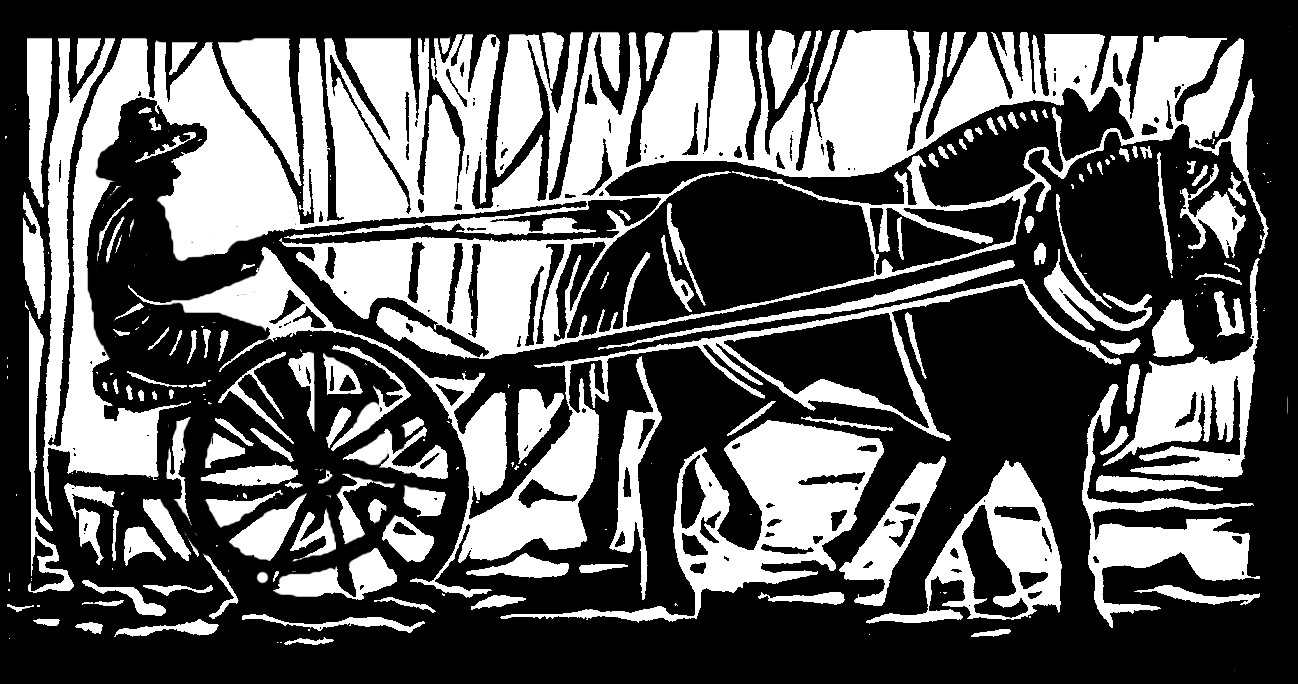In theory, having a thrifty, sustainable farm budget can simplify things. We buy less stuff, and therefore have less stuff, which should lead to blissful feelings of peace and order. In reality, it means two of everything, in case one breaks down, or in case we can cobble two together to make one working item. Take the case of haying, for example, which is weighing heavily on our minds this time of year, as the rain keeps coming and coming.
Two mowing machines: these are both horse-drawn sickle bar mowers, with different bar lengths, one rebuilt and one recently purchased from a farmer in Massachusetts who thought better of farming with horses and bought a tractor.
For many years we only had one mower, which was simple and sensible, except when it broke down in the only decent stretch of haying weather we’d had that year. It also meant we could never clip the pastures, because the nervous farmer couldn’t stand to have the mower broken down from pasture-clipping when it was needed for haying.
Now, the first mower can be used for haying, and when it breaks down, the pasture-clipping mower can step up. (Now, the nervous farmer, me, is trying not to think about what will happen if both mowers are broken down at once.)
Two hay rakes: well, three. There’s the pinwheel rake that we’re using. There’s the spare pinwheel rake. Then there’s the side delivery rake, wrested out of a neighbor’s hedgerow, which we had considered taking to the scrap yard, but it’s not in that bad of a shape, and might come in handy one desperate haying day.
Two hay loaders: we didn’t really mean to have more than one, but through a complicated series of barter agreements with a farrier, we ended up with two. They are big hulking implements, and take up a lot of room in the barn, where they are stored for the winter. They also take up a fair amount in our dooryard, where they hang out in spring, summer, and fall, ready for action at any moment.
In the interests of simplicity, we decided to sell one hay loader at an auction. We even took it to the auction, and someone bid on it, but the bid didn’t make the minimum price we had set. So we brought the hay loader home again, and that was the very summer that the first hay loader broke down in a critical haying moment (the storm is coming! the hay is dry! the farmers are frantic!), so we were mighty glad for the second hay loader. Now we can appreciate them both, just by looking out the kitchen window.
Two hay forks: no, no, many hay forks. The one we discovered here in the barn rafters when we moved to the farm. The one that came from my dairy farming parents. The one that came from my fellow’s mother’s neighbor’s garage. The one we can’t remember where it came from. The one a teacher at our daughter’s school found in his garden shed. The one that broke in half and makes for a handy short-handled fork when we’re stuffing hay into those rafters.
Two teams of horses: we didn’t mean to have these either. One team would seem like plenty for a little vegetable farm like ours. But if one horse goes lame in the middle of the season, it’s great to have a third horse. Plus if our three nice old horses are getting overtired in the middle of a hot haying day in July, our fourth nice old horse means we can give everybody a break. Every horse at least. Which leads to:
Two farmers: in case one breaks down, or in case you can cobble two together to make one working item . . .
Originally published in the Monadnock Shopper News, June 28 - July 4, 2023
